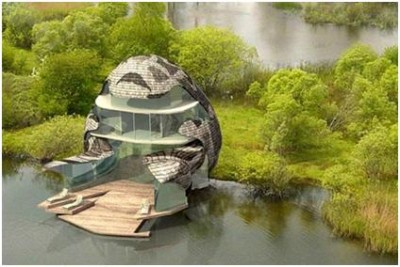Green homes have enough eco-friendly features to get platinum rating from LEED. LEED program is based on energy and environmental designing and to get LEED certification, your home must comply with the requirements given by LEED and its design should save water and energy sources, it should minimizing the carbon emissions and indoor quality of environment should be improved. The material used in construction of green homes should be environmental friendly and leave green effects. LEED’s platinum rating is most prestigious reward which you can win today.
What a gardener needs to consider while developing of small green home? What material is required for building such green homes? And eco green homes will require heating or cooling? There are several other questions which will be required when you are building the green home and have to comply with policies of Leading energy and environmental designing certification. However who perform this, they are well rewarded with incentives and benefits. A careful planning is much important before starting the any project.
Building green home doesn’t need much expenses and it is not a time consuming process. A green house should be small, simple and equipment or material used in it will be a minimal investment. Last decision pending point will be area or space required to build a green house, available choice and cost. A green house is the insight which should provide proper growing place to plants.
Instead of decision regarding type and size of greenhouse you select, it is important to decide the time required for its construction. But here someone should not be ambitious, because people say that they don’t have time for proper attention required for a green house. It is an ambiguity among the people for attention required for a green home. There are minimal requirements for how to maintain the environment while at green home, such as proper ventilation, heating and cooling procedure, wastes management/ recycling, humidity, water resources utilization and renewable energy source for lighting the home. The one who ha gardening hobby should invest in plantation and hobby should grow into business.
You can enjoy yourself with greenhouse construction, less expensive and more enjoyable if you have experience working with gardening tools. It is important to fit the automatic systems of frames from experienced plumbers and electricians.
The greenhouse should be constructed where it should get the more sun light it require. The housing sector is one of the priority areas with regard to energy efficiency in the United Nations Economic Commission for Europe (ECE) region – not only because it consumes a large amount of energy (up to 50 percent of total final consumption in individual member States in some of the recent years), but also because it remains remarkably wasteful. While the state of existing technology provides a high potential for drastically reduced energy use in housing, the sector currently maintains outdated inefficient practices, and is one of the drivers of high levels of consumption.
The implications are not trivial. Much more energy is used than necessary; the contribution of housing to carbon dioxide emissions is high and growing; many residents do not have affordable or “clean” energy sufficient to support their subsistence; the penetration of efficiency technology in housing is low and much of the related business potential is untapped. Rationalizing energy use in housing can address these challenges and thereby contribute to resolving today’s global problems of climate change, energy security, economic uncertainty, and poverty. It is this important policy field that the present report reviews.
Green Homes outlines the economic, social and environmental impacts of the problem, considers current policies, solutions and barriers to effective policies. It discusses policy responses that Governments should develop. The study makes clear that success in setting large-scale energy efficiency measures in motion depends on the establishment of a proper institutional infrastructure; the efforts of Governments of member States are absolutely crucial in this respect. Green Homes also pays due respect to the social sensitivity of the subject and calls for responsible actions, so that energy efficiency policies and social policies are interlinked and help fulfill. Improved energy efficiency in housing is defined as successful efforts to reduce the energy intensity of residential services, without compromising the levels of well-being of the residents or the environmental conditions.
While informed by the developments in the ECE region as a whole and considering cases from Western Europe and North America, this study makes a certain emphasis on countries that lag behind and where the greatest untapped potential for energy efficient housing exist – transition countries, including Eastern Europe, Caucasus and Central Asia (EECCA) and South-Eastern Europe (SEE). The specific challenge for policymakers of these countries relates to overcoming what can be called the energy inefficiency trap, or a situation in which countries having lower energy efficiency are unable to change their respective status due to lack of funds, experience, technology, motivation and initiative.
In addition to energy security, benefits from improved energy efficiency in housing include positive



